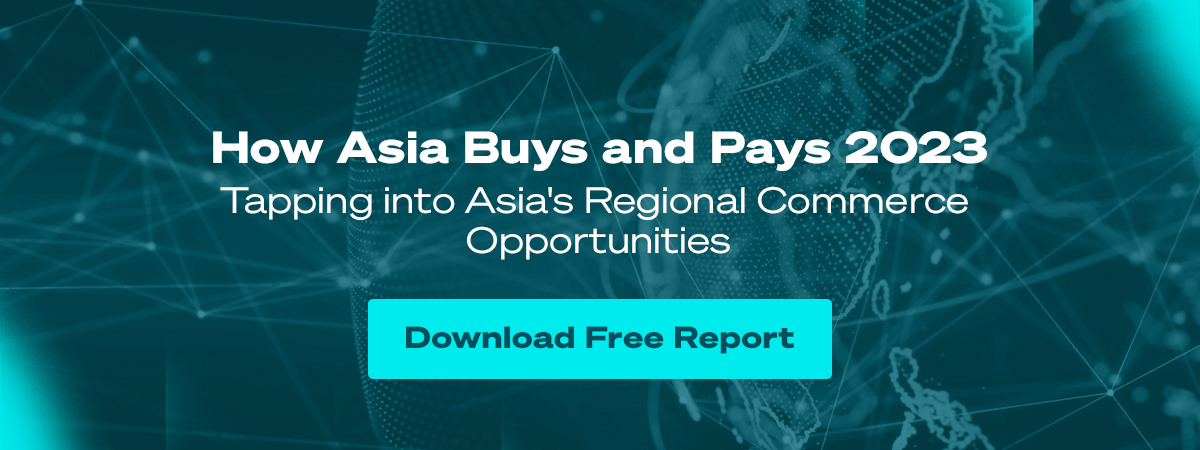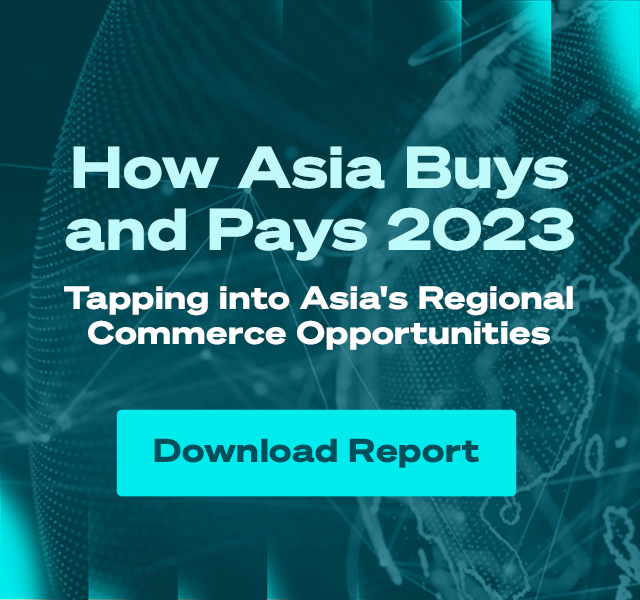
Payments Powerhouses: Revolutionising Digital Payments in India
Payments Powerhouses is a monthly series featuring trailblazers on Southeast Asia’s fintech scene. In the sixth instalment of the series, we speak with Vishwas Patel, Executive Director at Infibeam Avenues, India’s first e-Commerce and Fintech company listed on the Indian Stock exchanges, and Chairman of the Payments Council of India.
When payment gateways were non-existent in India, Vishwas conceptualised and built the country’s first third-party payment gateway. Today, his solution has grown to become India's largest direct debit engine, which connects to more than 55+ Indian banks in real-time and two million merchants across the region.
Hi Vishwas! Can you talk us through your journey and what you do at Infibeam Avenues?
Vishwas Patel: My journey started around 20 years back when I worked in my family’s real estate business. We branched out into retail around 1995-1996. By 1999, when the Internet started booming, I shifted the brand online. I was looking for a local payment gateway, but it didn't exist in India then.
One of the private banks in India had tied up with a local electronic service provider in Singapore, but there were high costs and risks as there were no security features such as Two-Factor Authentication (2FA) then. Debit cards weren’t allowed for online purchases, and there was minimal credit card usage as there were only two million credit cards in India.
I thought, “Someone needs to build a payment getaway to make it easier for people to purchase physical goods online and for entrepreneurs to collect payments online.” That was how I got started with CCAvenue.com, India’s first third-party payment gateway.
My team and I conceptualised the idea and worked with multiple banks to connect directly to their core banking solution and bypass the card network. By 2000, we developed a robust risk mechanism to use debit and credit cards for online purchases. This move made it easier for businesses to check their orders, send payment links, and build ready-made shopping carts.
Within five years, we had 200,000 merchants using our payment gateway. Our clients belonged to various industry verticals such as hospitality, travel, and airlines. Today, the company has a billion-dollar valuation and a strong presence in the Middle East. We are also the only FinTech company in India listed on the NSE and the Bombay Stock Exchange.
Can you tell us about the payments landscape in India?
Today, approximately 23% of the transactions happening in the country are digital. The rest are in the form of cash or other kinds of non real-time based transfer mechanisms. Just like other developing Asian countries, there’s still much dependence on cash to drive India’s rural, Tier 2 and Tier 3 economies.
India is still a debit-oriented market at large - around 916 million cards are being used, with 898 million debit cards and just 62 million credit cards. People here will spend only as much as they have at hand and not prefer going for credit transactions.
But there's an excellent momentum shifting towards digital payments in the country. There are 2 billion mobile wallets and around 4.72 million Point-of-Sale (POS) machines across India. Within the first quarter of 2021 itself, about 1.91 trillion rupees (~US$25.7 billion) of transactions took place within India.
How has the pandemic influenced the uptake of digital payments in India?
During the Covid-19 pandemic, many local shops, doctors, and educators shifted their services online. Many Ad Tech startups and companies have also moved online and started buying offline players at billion-dollar valuations.
Around a billion prepaid SIM cards are being used in India, and users often make an average of two $5 top-ups each month - that’s 2 billion transactions monthly. Before the pandemic, these transactions were mainly happening offline at local mom-and-pop shops. Today, 48% of these transactions are being done online.
Covid-19 has expedited the digitisation of the country.
Can you tell us about your work on the Unified Payments Interface (UPI)?
There was an existing system called the Immediate Payment Service (IMPS). UPI 1.0 was developed by the National Payments Corporation of India (NPCI) based on the IMPS.
Essentially, UPI is a system that enables real-time Peer-to-Peer (P2P) transfer, where payments can be transferred easily and securely from one bank account to another. Users had to enter a PIN or a one-time password (OTP) to process the transfer as a security measure.
My team and I were involved in the initial testing stages of UPI 1.0. Eventually, Infibeam Avenues was among the first to enable UPI as a payment option across all our merchants. Then came UPI 2.0, which has evolved the way people make payments due to its convenience.
Transactions using cheques, debit methods, and demand drafts are becoming less popular.
Meanwhile, UPI 2.0 is growing massively - it’s brilliant, scalable, and so easy for merchants and consumers to use.
You are the Chairman of the Payments Council of India (PCI). Can you tell us more about your role and what PCI does?
PCI is an umbrella body of roughly a hundred members from various payments companies in India. The council was formed to represent non-banking payment industry players such as card networks like Visa and MasterCard, private wallets, white-label ATM providers, POS players, and merchant payment gateways. We also have a Self-Regulatory Organisation (SRO) within PCI to resolve issues between the payment aggregators and payment players more efficiently.
PCI works very closely with our country’s central bank, the Reserve Bank of India (RBI), which implements mandates and legislation to address digital payments issues.
With the increase in digitization of payments in India, PCI and RBI work together to mitigate significant issues such as fraud and phishing. Our vision is to grow awareness of digital payments and move India towards a less-cash society.
Do you think there is a future where India can go completely cashless?
I don’t think the country aims to be cashless because we have seen the 2007 Global Financial Crisis impact. India was one of the least affected because it depended a lot on its cash economy.
So, our goal is to be a less-cash society rather than a cashless society. The issue here is that digital payments and cash are growing fast, so it’s hard to gauge. Before the demonetisation in India, there were 18 lakh crores of cash in the market, but it has risen to 28 lakh crores. On the other hand, every quarter, we have 1.10 billion transactions happening - it's growing so fast!
India is the fastest-growing economy globally with a 1.3 billion-strong population, 60% of whom are below the age of 25 to 30 years. As of now, the momentum towards a less-cash society is much appreciated.
With the e-commerce boom in India and the emergence of large online players, has this contributed to the increase in solutions you provide?
Yes. India is a nation of SMEs. There are around 16 to 18 million SMEs in the country, which are still not digitised nor have they been accepting any form of digital payments. So, the market opportunity is enormous.
Our core is already built, including payment reporting, fraud, analysis, compliance, and security. Across the world, we see a convergence of online and offline payments. So, our focus is to continually enhance features for the front-end transaction to cater to every vertical such as the hospitality, education, and tech sector. With small mom-and-pop stores in small villages also embracing digital payments, we must develop solutions to customise the backend systems and APIs.
In India, we have more than 300 payment options to cater to every individual and business. We are constantly coming up with innovative ways for consumers to pay and businesses to accept payments.
Where do you think India's payments future is heading towards?
Globally, data localisation is becoming the norm, and local payment options are coming in with the local networks - every country wants to have its own card network. In India, we’ve built our own NPCI RuPay Network, which has wide acceptance at ATMs, POS devices and e-commerce websites across India. Data localisation laws are also put in place, so every payment operator is storing data locally. This standard online-offline convergence will emerge in every country within the next three to five years.
In India, we are looking at enabling more credit uptake as more merchants join the digital economy. For instance, the government has introduced an e-Marketplace called GeM for public procurement. Infibeam Avenues built the entire solution architecture. Any merchant that sells to the government has to register as a seller, and Infibeam Avenues will conduct a ‘Know Your Customer’ (KYC) compliance check. Since we started one and a half years ago, more than 1.1 million sellers have joined online.
The portal has transformed public procurement in India as it prevents bribery and corruption, enables economies of scale, and reduces government expenditure while enhancing transparency and efficiency in public procurement. This solution will significantly lower the country’s fiscal deficit and increase the number of online merchants in India. That's how the whole payment ecosystem is evolving.
. . .
Payments Powerhouses is a monthly editorial series interviewing the movers and shakers of the payments and wider fintech industry, in Southeast Asia and beyond. If you’d like to be featured on Payments Powerhouses, reach out to us here.

